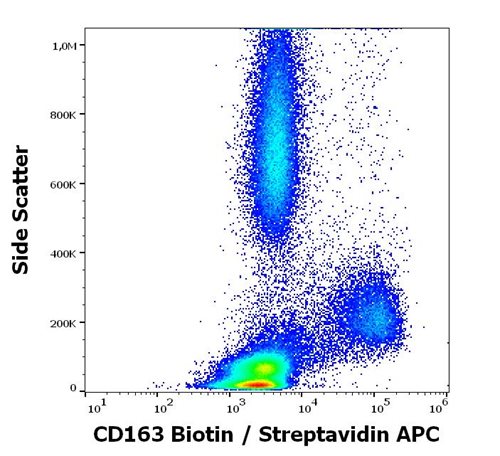Anti-CCR5 Polyclonal Antibody

Figure 1: Anti-CCR5 antibody(39-2030). Western blotting: Lane 1: Mouse Lung Tissue Lysate, Lane 2: Mouse Intestine Tissue Lysate, Lane 3: Mouse Kidney Tissue Lysate.
Roll over image to zoom in
Shipping Info:
For estimated delivery dates, please contact us at [email protected]
| Amount : | 100 μg/vial |
| Isotype : | Rabbit IgG |
| Purification : | Immunogen affinity purified. |
| Content : | Each vial contains 5mg BSA, 0.9mg NaCl, 0.2mg Na2HPO4, 0.05mg Thimerosal, 0.05mg NaN3. Reconstitute : Add 0.2ml of distilled water will yield a concentration of 500ug/ml. |
| Storage condition : | At -20˚C for one year. After reconstitution, at 4˚C for one month. It can also be aliquotted and stored frozen at -20˚C for a longer time. Avoid repeated freezing and thawing. |
| Gene : | Ccr5 |
| Gene ID : | 12774 |
| Uniprot ID : | P51682 |
| Alternative Name : | C-C chemokine receptor type 5; C-C CKR-5; CC-CKR-5; CCR-5; MIP-1 alpha receptor; CD195; Ccr5; Cmkbr5 |
| Immunogen Information : | A synthetic peptide corresponding to a sequence at the N-terminus of human CCR5(19-34aa PCQKINVKQIAARLLP), different from the related rat sequence by two amino acids. |
Human CC chemokine receptor 5(CCR5), which is 17.5 kb from the CMKBR2 gene, encodes a 352-amino acid protein with a calculated molecular mass of 40,600 Da. It is organized into four exons and two introns. Human CCR5 is a co-receptor for macrophage-tropic strains of human immunodeficiency virus(HIV)-1 and is expressed by bone-marrow-derived cells. CCR5 is expressed on neurons, astrocytes, and microglia in the central nervous system, and on epithelium, endothelium, vascular smooth muscle and fibroblasts in other tissues. Functionally, CCR5 mediates the activation of cells by the chemokines macrophage inflammatory protein-1alpha, macrophage inflammatory protein-1beta, and RANTES, and serves as a fusion cofactor for macrophage-tropic strains of human immunodeficiency virus type 1.
Western blot : 0.1-0.5μg/ml; Immunohistochemistry(Paraffin-embedded Section) : 0.5-1μg/ml
For Research Use Only. Not for use in diagnostic/therapeutics procedures.
| Subcellular location: | Cell membrane |
| Post transnational modification: | Phosphorylation on serine residues in the C-terminal is stimulated by binding CC chemokines especially by APO-RANTES. |
|
There are currently no product reviews
|












.png)











